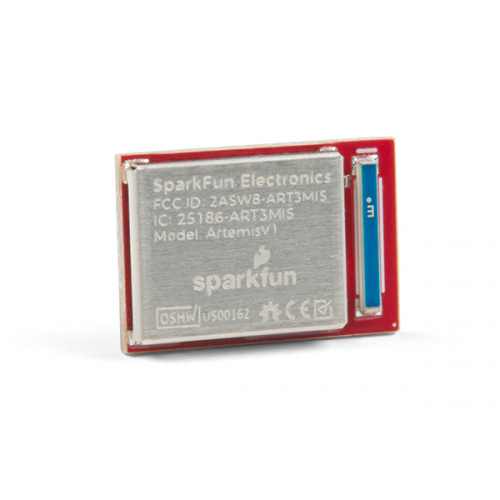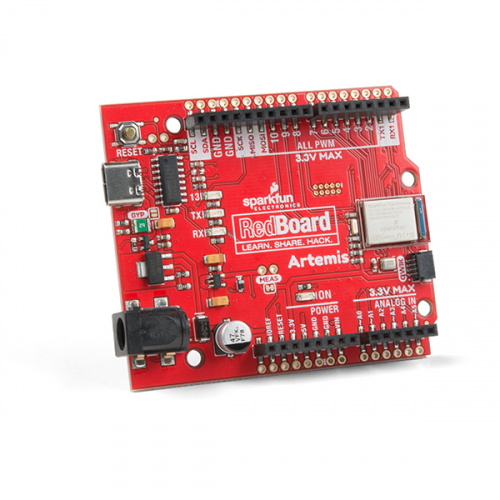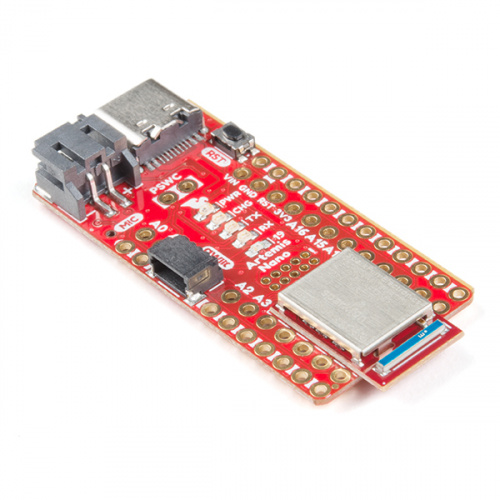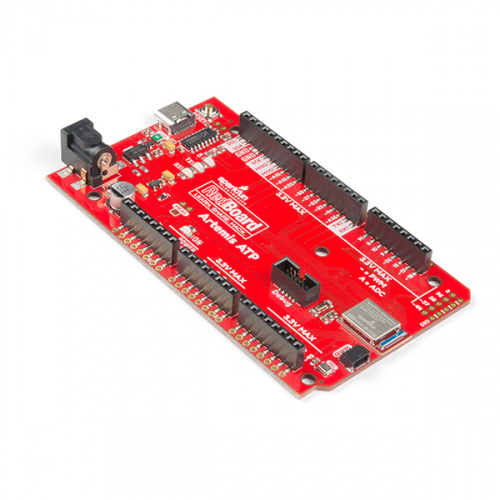We did it, everyone! SparkFun’s Artemis Module has earned approval from the Federal Communications Commission (FCC) and Industry Canada (IC), making it the first open-source, US-manufactured, FCC/IC-certified BLE module on the market. With this certification, the SparkFun Artemis Module enables product designers to use the same module from prototype to production, and significantly increases accessibility of low-power machine learning for any design!
Fully certified and ready for any product!
In terms of technology, the SparkFun Artemis Module is on the leading edge of low-power machine learning - it can be powered from a single coin-cell battery. It is a Cortex-M4F with BLE 5.0 running up to 96MHz, with power needs as low as 6uA per MHz (less than 5mW) and a footprint of only 10mm by 15mm. The module enables the integration of TensorFlow into any design, runs machine learning models locally, and can be programmed and used with the Ambiq Apollo SDK or Arduino.
Three new Artemis RedBoards!
To make getting started with Artemis even easier, we've put it on three different boards to get you up and running: the RedBoard Artemis, RedBoard Artemis Nano and RedBoard Artemis ATP (All the Pins). Each of these boards has been equipped with Qwiic connectors, enabling immediate access to the extensive SparkFun Qwiic ecosystem to easily integrate more than 70 sensors and accessory boards. That means no soldering is needed and they are all daisy-chainable.
The SparkFun Artemis Module and the three Artemis RedBoards are available today. To find out more about each board, you can go to their respective product pages or the Artemis home page linked below. We'll go into a little more information on Artemis this Friday, along with a special deal that we are sensing you might be interested in!
Distributor Notice: The SparkFun Artemis Module is unavailable for distributor purchase until October 14, 2019. For more information on pre-ordering, please fill out this form: http://www.sparkfun.com/preorder_artemis.











Congratulations Sparkfun! The Artemis looks like a great solution for BLE projects so I'm glad to see they are certified and ready to go. I'm sure there was a lot of hard work that went in to getting these produced.
Is there any chance that Sparkfun could do a comparison between the Artemis and nRF52840? Sparkfun sells both and they seem similar from the basic specifications. So for someone (like me) trying to pick which one to use it can be difficult to understand the pros and cons of each platform.
Not sure if we will, but I'll mention it.
Am I missing a more detailed post that elaborates the process and cost of the FCC process? I really need this information.